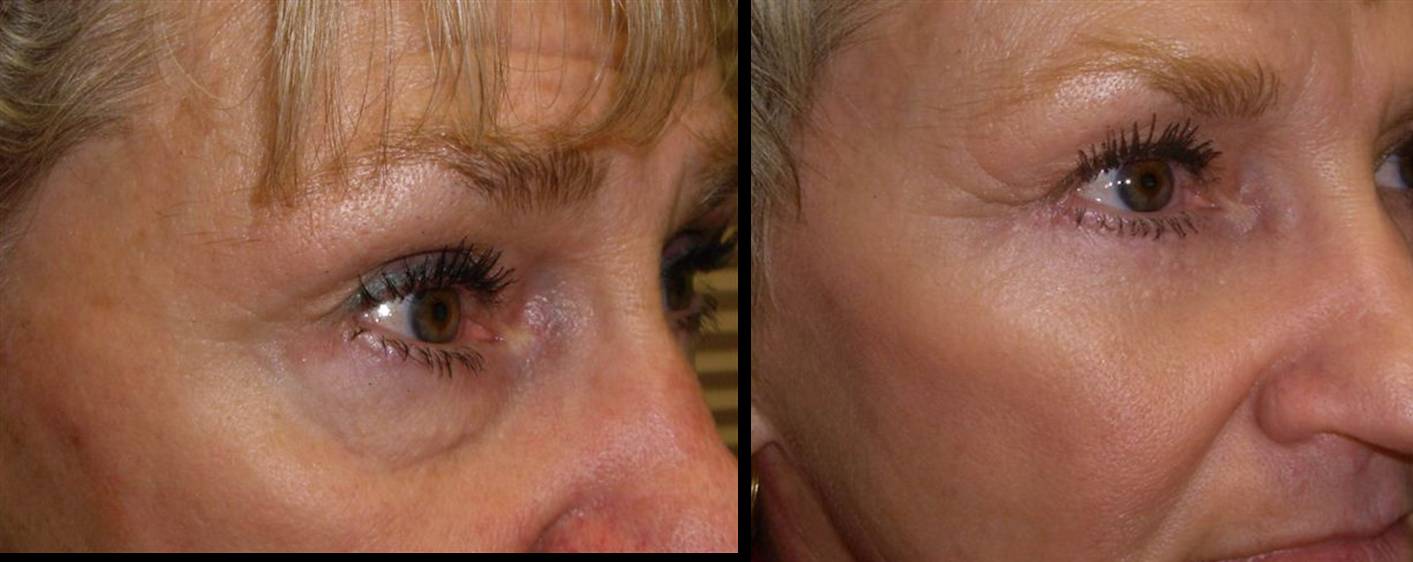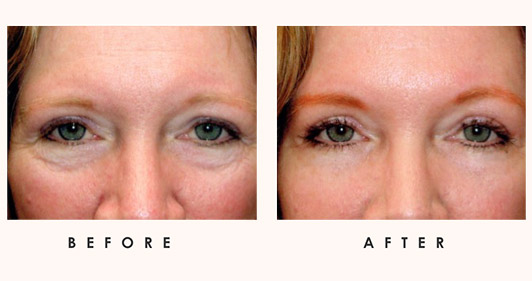Fat Transfers
Jump To
A fat transfer is also referred to as fat grafting, lipo-filling, and fat injection. It is a procedure that uses the patient’s own fat from another portion of their body to fill in facial depressions, wrinkles, and other irregularities. These wrinkles/depressions are common signs of volume and muscle mass loss associated with aging. Natural fat transferred from other locations in your own body can restore a youthful appearance to the face.
Patients often try fillers first and then ask for a more permanent and natural solution. If you like your appearance after being injected with synthetic fillers, you may be a great candidate for fat transfer, as it is a longer lasting solution to aging.
A healthy lifestyle and a good skincare regimen (Obagi or Epionce lines, for example) will ensure that the results of the procedure last as long as possible.
What Is a Fat Transfer Used to Treat?
There are many fat transfer applications. It can be used to fill in hollow sunken cheeks and temples. It can fill in the deep grooves that run from the corners of the nose to the corners of the mouth (nasolabial folds) and wrinkles that come down from the sides of the mouth (marionette lines). It can also fill in parentheses lines (curved wrinkles that border the lips), hollows under the eyes, and sagging jawlines. Fat transfers can also be used to provide a long-lasting lip filler to enhance the appearance, or plump up, thin lips.
Dr. Jackson Explain the Difference Between Fat Transfer and Dermal Fillers
Your Initial Consultation
The initial step is to consult with on of our physicians to determine whether you are a suitable candidate for a fat transfer procedure. You should be in general good health without any underlying conditions that can alter the results of the treatment (non-smoker, low consumption of alcohol, not pregnant or breastfeeding). You should have realistic expectations regarding the results of the procedure and have some extra fat to transfer.
Our physicians will review your health conditions, medical history, medications, family medical history, and allergies to determine whether you are suitable for a facial fat transfer. A physical examination will be conducted, and a treatment plan will be developed. The treatment plan will include the area from which the fat is harvested for transfer. Usually, fat is taken from the abdomen or inner thigh.
Note that a fat transfer can be combined with other facial procedures like blepharoplasty surgery. The before/after images directly below combine lower lid blepharoplasty, fat transfer, and upper eyelid fat pad removal.
The Fat Transfer Procedure
In preparation for the procedure, the treatment area and the fat extraction area are cleaned with an antiseptic and the areas are marked. Local anesthesia is administered in both areas to ensure that you feel comfortable throughout the procedure. Fat is obtained by a limited liposculpture through one or more incisions of 3 to 5 millimetre. It is then processed by centrifuging, filtering, or rinsing. Small amounts of fat are injected into the treatment site, ensuring that the transferred fat is surrounded by healthy tissue. When transplanted fat comes into contact with the surrounding tissues, oxygen and nutrients are supplied which allows it to survive and thrive for long-lasting results.
by: Mick Houston
The Recovery and Healing Process
The surgical areas may be swollen immediately after the procedure. Bruising and swelling are very common but will improve within a few days. The treatment is safe and takes about two hours. Dr. Boerner will offer post-procedure care that must be followed precisely to avoid complications during recovery.
Frequently Asked Questions
-
What is a fat transfer?
A fat transfer is also referred to as fat grafting, lipo-filling, and fat injection. It is a procedure that uses the patient’s own fat from another portion of their body to fill in facial depressions, wrinkles, and other irregularities. These wrinkles/depressions are common signs of volume and muscle mass loss associated with aging. Natural fat transferred from other locations in your own body can restore a youthful appearance to the face. Patients often try fillers first and then ask for a more permanent and/or natural solution. If you like your appearance after being injected with synthetic fillers, you may be a great candidate for fat transfer, as it is a longer lasting solution to aging. A healthy lifestyle and a good skincare regimen will ensure that the results of the procedure last as long as possible. Our office recommends and sells the regimens offered by the brands Epionce and Obagi. -
What is a fat transfer used to treat?
There are many fat transfer applications. It is often used to fill in hollow sunken cheeks and temples, deep grooves that run from the corners of the nose to the corners of the mouth (nasolabial folds), wrinkles that come down from the sides of the mouth (marionette lines), hollows under eyes, and sagging jawlines. -
Does insurance cover the cost?
Fat transfer is typically considered cosmetic and is not usually covered by insurance; however, there may be exceptions related to medically necessary reconstructive procedures. -
Payment?
A 20% non-refundable deposit is due when the surgery is scheduled. The remaining balance is due two weeks prior to surgery. We accept cash, check, Visa, MasterCard, Discover, and Care Credit. -
How do I prepare?
Stop Aspirin, Motrin, Ibuprofen, Aleve, Advil, fish oil, Vitamin E, Coumadin (Warfarin), and any other blood thinner for two weeks prior to surgery. You may choose to purchase Arnica Montana, an herb which reduces bruising, and use as instructed. This can be purchased from our office, please ask for details. -
What kind of anesthesia is used?
Patients will require local anesthesia with IV sedation. Conscious sedation, or twilight anesthesia, is used which allows you to breathe naturally and sleep comfortably throughout the procedure. Anesthesia cost is dependent on the duration of the surgery and a quote will be given to you before you schedule your procedure. Anesthesia fees are likely to increase if you opt to combine surgeries. -
Is a fat transfer painful?
No discomfort is experienced during the actual procedure given anesthesia. -
How long will it take?
Fat transfers take approximately one hour to perform. After our surgeon extracts the fat, our technician spins and purifies the fat before it is transferred to the secondary location. -
Are there stitches?
Stitches will not be used on either the fat removal or transfer location. -
What will my recovery be like?
Generally, you may return to work after 3-5 days after surgery and use make-up/skincare products after your 1-week post-op appointment. This timeline can vary depending on your body’s healing and recovery rate. -
What are the risks?
Infection is possible but rare. Bruising often occurs and lasts 1-2 weeks. You may notice puncture points where needles extract/inject, but those will disappear in a short amount of time. -
Where is the procedure performed?
The fat transfer treatments are performed at Idaho Eyelid & Facial Plastic Surgery, PLLC, 111 W Main Street, Suite 200 in Boise.
Contact Us Today
A facial fat transfer can give you the youthful look that you desire for years to come. Find out more about the fat transfer procedure – schedule an appointment through our office.




